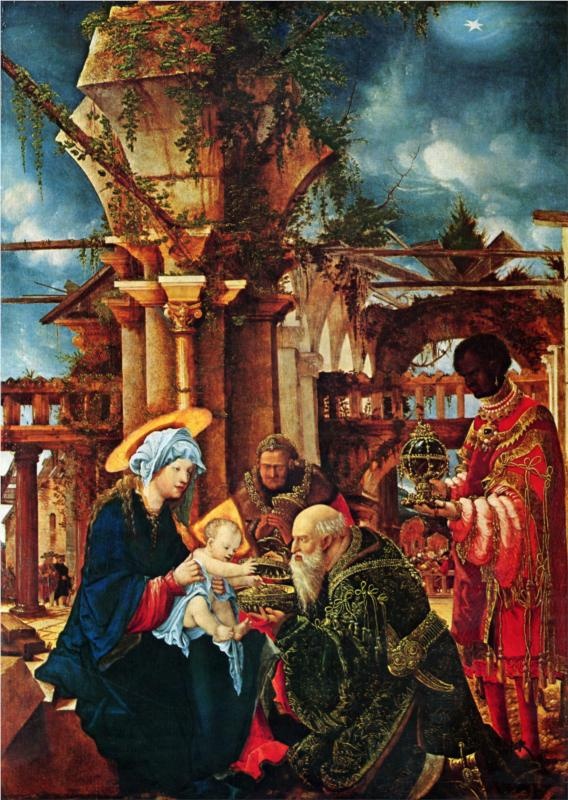Cathedra, Arcadia Viols join forces for early Christmas music at the Folger Library

“The Adoration of the Magi.” Albrecht Altdorfer, c.1535.
The Folger Consort’s Christmas concert is often the best in the city. No carol sing-alongs or chestnuts here–just early music rarities performed on historical instruments.
This year’s program, centered on Renaissance and Baroque music in German-speaking lands, is lively and inventive, combining expected “S” names—Senfl, Schütz, Scheidt, Schein—with those less known.
For the vocal parts, director Robert Eisenstein turned to the chamber choir Cathedra, resident at Washington National Cathedral. They were best in smaller combinations, one on a part, as in Heinrich Isaac’s Puer natus est nobis, morphing seamlessly from chant into polyphony and back again.
Sopranos Crossley Hawn and Emily Noël had the most consistently beautiful sound, floating together in twin parts, as in Michael Praetorius’s dance-infused Puer natus/Ein Kind geborn. Combined with alto Lucy McVeigh and bass Steven Combs, the sopranos were outstanding in Praetorius’s unaccompanied setting of the homespun tune “In dulci jubilo,” one of three joined together in this concert.
With all seven singers together, the group had a less refined blend, tilting too much in favor of the lower voices. This gave climactic weight to the large ensemble pieces, where the rhythmic interplay could be staggeringly complex, as in Heinrich Schütz’s Ein Kind ist uns geboren and the sparkling multiphonic Alleluias in the same composer’s Hodie Christus natus est. With only Combs on the bass part of the final piece, Franz Tunder’s Hosianna dem Sohne Davids, the balancing was ideal; Combs was poised and refined in the first of three increasingly elaborate verses.
There were some ragged edges in the instrumental parts. performed by the five musicians of Arcadia Viols. Problems of intonation and ensemble roughness undermined their contributions to an opening set of anonymous pieces from the Glogauer Liederbuch. Despite the folksy titles–“The Rat’s Tale” and “The Cat’s Paw,” with the latter featuring a plaintive “meow” added by Douglas Kelly on the bass viol–these miniatures were as austere as the Latin polyphony that went with them.
Two dance suites, by Johann Heinrich Schein and Andreas Hammerschmidt, offered an ingenious example of the rhythmically inventive music referenced by Praetorius in his choral pieces, given rough-hewn life by the consort of viols of different sizes. The plaintive but reserved sound of the viols was most effective in Isaac’s tender partsong “Innsbruck, ich muss dich lassen,” a celebrated secular song filled with bittersweet regret.
Organist Adam Pearl added discreet continuo accompaniment that filled out the instrumental fabric, but more varied and stronger instrumental timbres would have been welcome. Regrettably, Pearl had only one solo outing, a virtuosic prelude by Pachelbel, consisting of ever more intricate variations on the chorale “Nun komm der Heiden Heiland.”
It was a shame not to have heard more of the sacred music of Samuel Scheidt, represented Sunday only by an instrumental canzona on a French song, brilliant in its contrapuntal intricacy.
The title of the program, “Lo How a Rose E’er Blooming,” is drawn from what is arguably Praetorius’s most famous piece, the devotional carol Es ist ein Ros entsprungen. The musicians presented several facets of this evergreen work, from a gentle solo from Emily Noël, to four voices with organ, as well as a verse for just viols and a conclusion for all forces. The little flower did indeed smell sweet.
The program will be repeated through December 23 at Folger Shakespeare Library. folger.edu; 202-544-7077.

Posted Dec 19, 2017 at 12:39 pm by Jenny
Great article